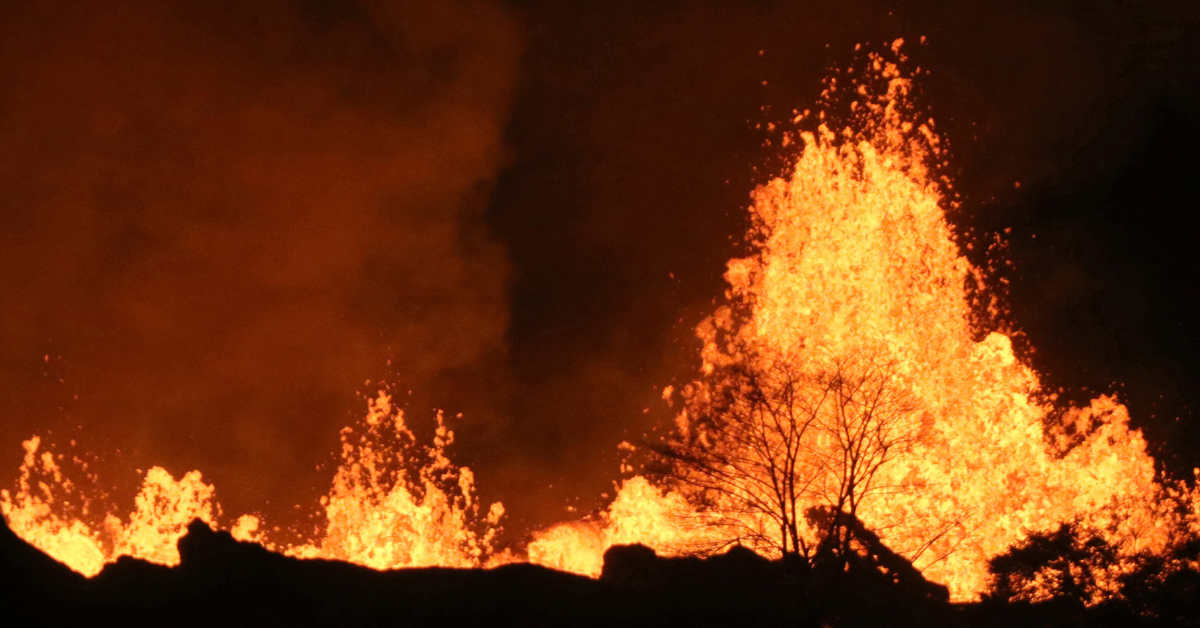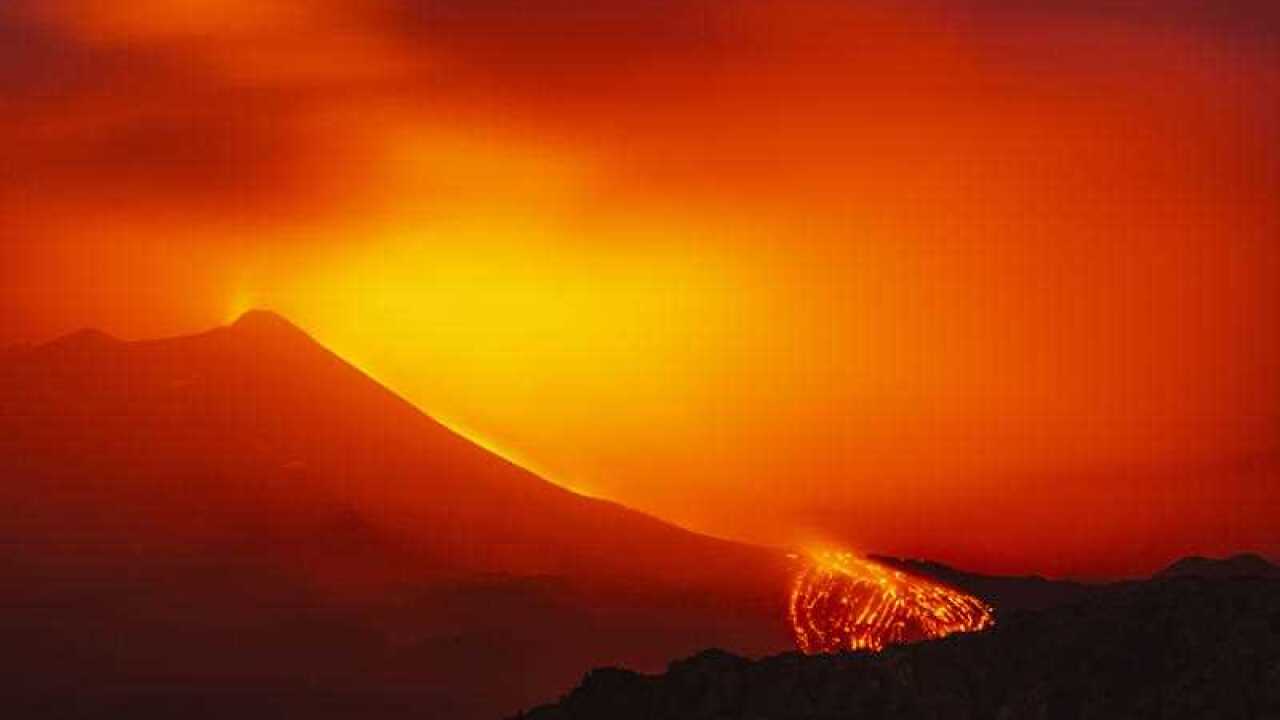The discovery of 100 underground volcanoes in the outback is set to change Australians' understanding of the continent, new findings claim.
An international team, including scientists from the University of Adelaide and the University of Aberdeen, uncovered the volcanoes using advanced subsurface imaging technology to identify volcanic craters, lava flows and magma chambers in the Cooper-Eromanga basins in South Australia.
The volcanoes developed in the Jurassic period, between 180 and 160 million years ago, and have been buried beneath hundreds of metres of sedimentary rocks.
And it suggests that Australia was more volcanic than previously thought.
Simon Holford, Associate Professor at the University of Adelaide, explained that these volcanoes could just be the start.
"Our discovery raises the possibility that there might be more buried volcanic landscapes beneath the surface of the Australian continent," Professor Holford told 9News.
Professor Holford also said the findings are significant because it provides a clearer picture of how the continent evolved.
"A great challenge when it comes to reconstructing the geological evolution of Australia is that much of the continent is covered by regolith which covers the underlying solid rock. Using approaches borrowed from oil and gas exploration, we've been able to peer below the cover of regolith and help add a few pieces to the puzzle of the evolution of the Australian continent," Professor Holford said.
"Also, active volcanic landscapes are often quite difficult to study – our buried volcanic landscape allows us to study a 'frozen' volcanic environment in a safer manner."
The Cooper-Eromanga Basins are now a dry and barren landscape, but in Jurassic times they would have been riddled with craters and fissures, which spewed hot ash and lava into the air, and were surrounded by networks of river channels, which evolved into large lakes and coal-swamps.
The research also suggests there was more volcanic activity in Australia during the Jurassic period than previously thought and could change the understanding of the processes that operated in the earth's past.
The researchers have named their discovery the Warnie Volcanic Province after one of the drill holes that penetrated Jurassic volcanic rocks (Warnie East-1), but also in recognition of the explosive talent of former Australian cricketer Shane Warne.

 www.9news.com.au
www.9news.com.au
An international team, including scientists from the University of Adelaide and the University of Aberdeen, uncovered the volcanoes using advanced subsurface imaging technology to identify volcanic craters, lava flows and magma chambers in the Cooper-Eromanga basins in South Australia.
The volcanoes developed in the Jurassic period, between 180 and 160 million years ago, and have been buried beneath hundreds of metres of sedimentary rocks.
And it suggests that Australia was more volcanic than previously thought.
Simon Holford, Associate Professor at the University of Adelaide, explained that these volcanoes could just be the start.
"Our discovery raises the possibility that there might be more buried volcanic landscapes beneath the surface of the Australian continent," Professor Holford told 9News.
Professor Holford also said the findings are significant because it provides a clearer picture of how the continent evolved.
"A great challenge when it comes to reconstructing the geological evolution of Australia is that much of the continent is covered by regolith which covers the underlying solid rock. Using approaches borrowed from oil and gas exploration, we've been able to peer below the cover of regolith and help add a few pieces to the puzzle of the evolution of the Australian continent," Professor Holford said.
"Also, active volcanic landscapes are often quite difficult to study – our buried volcanic landscape allows us to study a 'frozen' volcanic environment in a safer manner."
The Cooper-Eromanga Basins are now a dry and barren landscape, but in Jurassic times they would have been riddled with craters and fissures, which spewed hot ash and lava into the air, and were surrounded by networks of river channels, which evolved into large lakes and coal-swamps.
The research also suggests there was more volcanic activity in Australia during the Jurassic period than previously thought and could change the understanding of the processes that operated in the earth's past.
The researchers have named their discovery the Warnie Volcanic Province after one of the drill holes that penetrated Jurassic volcanic rocks (Warnie East-1), but also in recognition of the explosive talent of former Australian cricketer Shane Warne.


